R5 名古屋大学キャンパスマップ Museum & Gallery
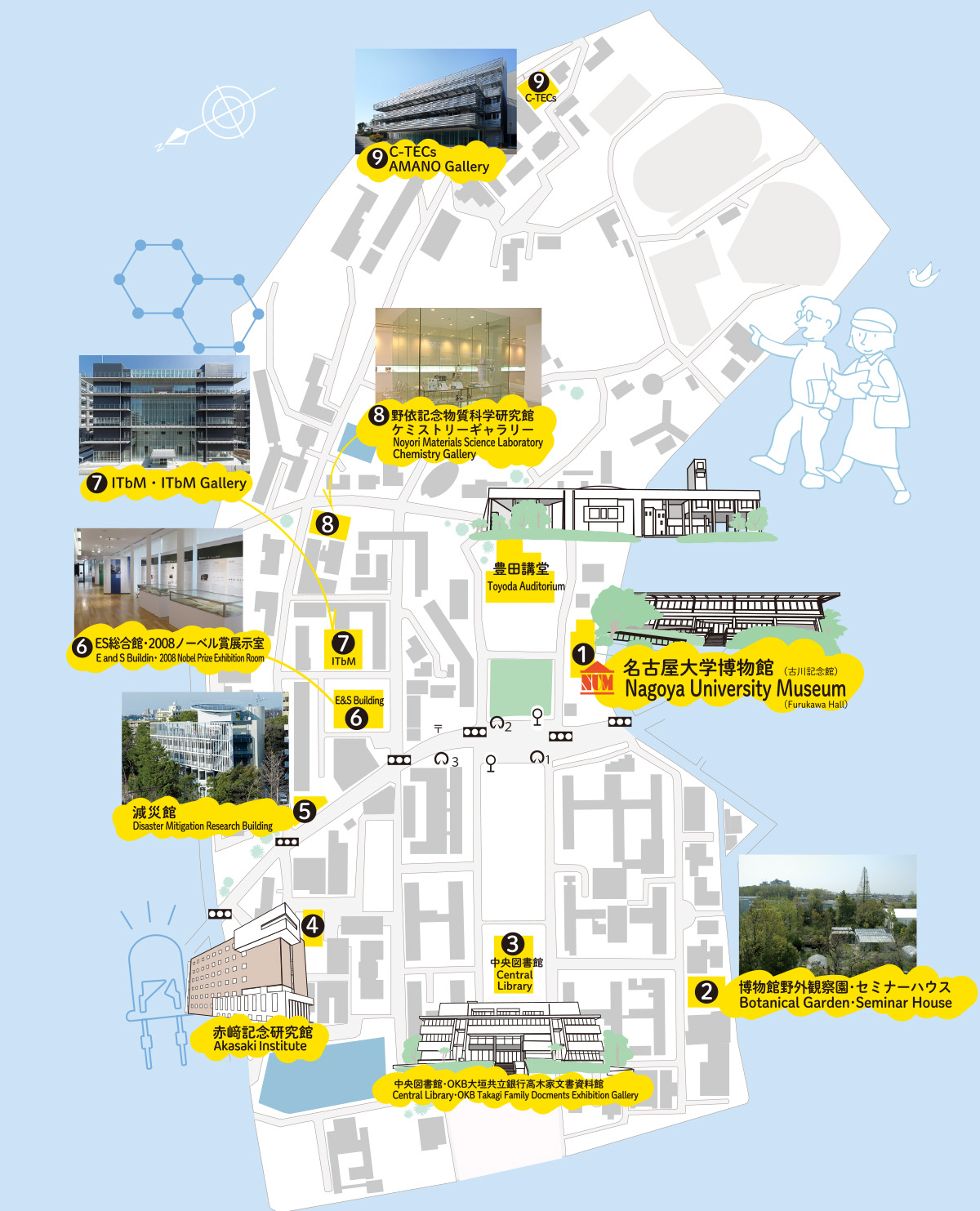 博物館(古川記念館)
博物館野外観察園・セミナーハウス
中央図書館・OKB大垣共立銀行高木家文書資料館
赤﨑記念研究官
減災館
ES総合館・2008ノーベル賞展示室
ITbM・ITbM Gallery
野依記念物質科学研究館 ケミストリーギャラリー
C-TECs AMANO Gallery
博物館(古川記念館)
博物館野外観察園・セミナーハウス
中央図書館・OKB大垣共立銀行高木家文書資料館
赤﨑記念研究官
減災館
ES総合館・2008ノーベル賞展示室
ITbM・ITbM Gallery
野依記念物質科学研究館 ケミストリーギャラリー
C-TECs AMANO Gallery
1 博物館 古川記念館 Nagoya University Museum (Furukawa Hall)
-
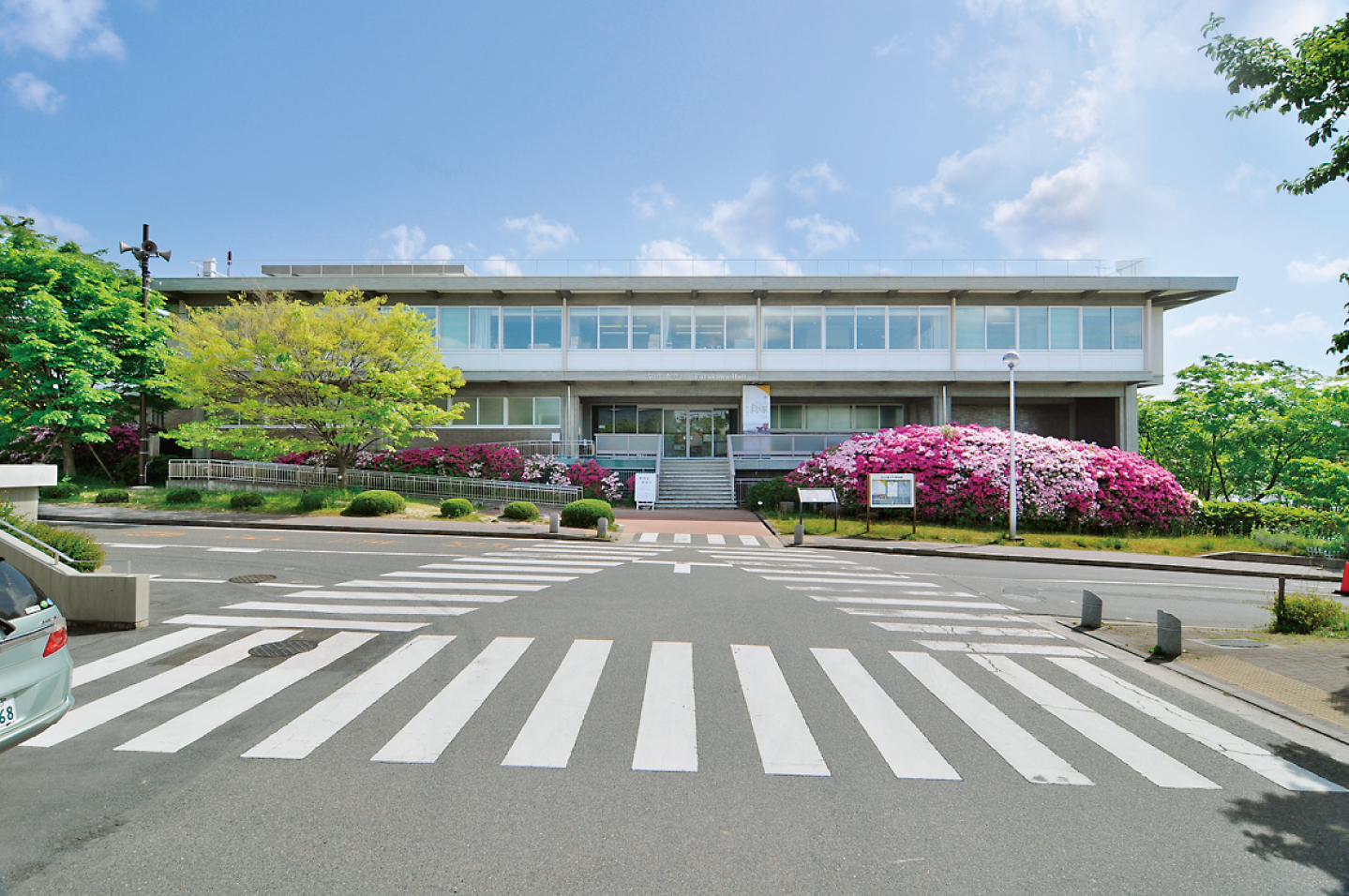
名大の歴史や研究はもちろん、地域の自然やアートの展示を無料開放
開館時間:10:00~16:00 休館日:日・月曜
お問い合わせ:052-789-5767Beyond NU’s history and research, museum exhibitions also draw attention to the natural environment and art of our region. Our outdoor exhibits include Kota KINUTANI’s stone sculptures, and we occasionally organize hands-on learning opportunities and other events. Admission is free.
Open 10:00-16:00, closed on Sundays, Mondaysまずはここから!
名古屋大学の歴史や研究はもちろん、地球の歴史や東海地方の自然について展示を無料開放しています。前庭には絹谷幸太氏の石彫も展示されています。ノーベル賞受賞研究が集う
ノーベル賞受賞にいたった名古屋大学の研究者とその研究内容について、総覧する展示があります。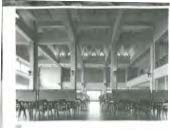 ユニークな建物
ユニークな建物
木目の入った、打ちっぱなしのコンクリート、上層階に行くほど広がるフォルム、折板天井の吹き抜け、断面十字型の柱など、近代建築の特徴がみどころです。建築家谷口吉郎による設計(1964年)。図書館からの転身
1981年まで名大の附属図書館でした。その後資料館となり、2001年に博物館として一般公開されるようになりました。
日本ヘラルド映画などのヘラルドグループを築いた古川為三郎氏と志ま夫妻の寄附により建設されました。 -
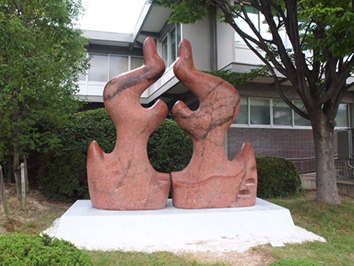 絹谷幸太 石彫群
絹谷幸太 石彫群
「絹谷幸太 創知彫刻」の展示を機に屋外に展示。見るだけでなく作品に触れ、素材である石を理解することができます。 -
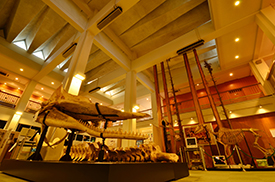 常設展示…マッコウクジラ骨格、巨大アンモナイト、ムラージュ、電子顕微鏡、日本最古の石、土器石器等、ノーベル賞展示等2000 年の開館以来、ホンモノにこだわりをもって展示を行っています。
常設展示…マッコウクジラ骨格、巨大アンモナイト、ムラージュ、電子顕微鏡、日本最古の石、土器石器等、ノーベル賞展示等2000 年の開館以来、ホンモノにこだわりをもって展示を行っています。
2 博物館野外観察園・セミナーハウス
-

開園時間:10:00~16:00 休園日:日・土曜・祝
お問い合わせ:052-789-5767500種類以上の植物を公開
野外観察園では名大での教育や研究のために育てられているたくさんの植物が公開されています。迷路のような見学ルートで散策気分を味わえます。展示施設もあります
観察園には屋内展示の施設(セミナーハウス)もあります。奥の階段から2階に上り、自由にご覧ください。季節ごとに、観察園の植物や名大キャンパスでみられる野鳥などの写真展などが催されています。
3 中央図書館
-
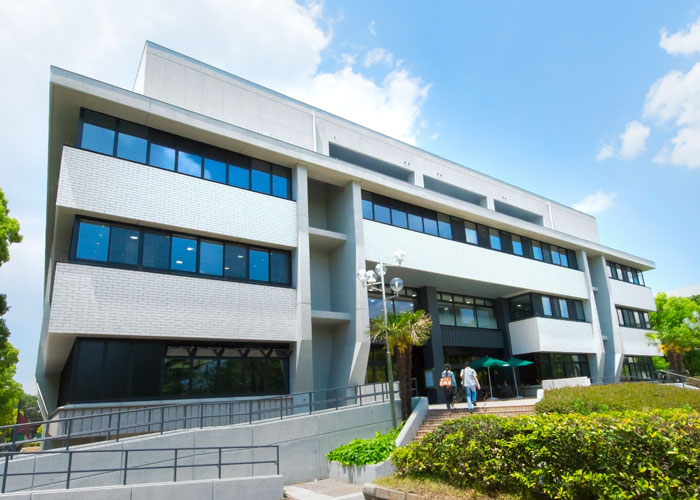
※開館日時の詳細はHP等で要確認 http://www.nul.nagoya-u.ac.jp/
お問い合わせ:052-789-3678NU’s academic information center. Materials in part in the collection are also available to visitors, OKB Takagi Family Docments Exhibition Gallery is open to the public. *Please check for up-to-date hours of operation on our website. The exhibition gallery is open until 30 minutes prior to the library closing.
名大図書館の中心
名大附属図書館は20以上の図書館・図書室から構成されていますが、そのセンターが中央図書館です。学外の方も利用できます
学術にかかわる学習・研究を目的とし、当館所蔵資料を利用される場合、学外の方も利用することができます。OKB大垣共立銀行高木家文書資料室
高木家文書など図書館が収蔵する貴重な古文書などの展示が公開されています。休憩スポット
入口にスターバックス 月曜~金曜: 8:30~21:00 土日祝: 9:00~18:00
4 赤﨑記念研究館 Akasaki Institute
-

開館時間:10:00~16:00 休館日:日・月曜・祝
Taking Professor Isamu AKASAKI’s research accomplishments as its point of departure, the institute exhibits laboratory equipment and other items involved in the development of blue LED technology.
Open 10:00-16:00, closed on Sundays, Mondays and Holidays青色LEDの研究展示
名大で世界に先駆けて開発された青色発光ダイオード(LED)の研究を紹介する展示室(1階)を無料公開しています。160インチLEDディスプレイを始め、青色発光ダイオードを利用した信号機や携帯電話、赤﨑特別教授の研究業績、実験機器などが展示されています。赤﨑勇特別教授の研究業績を顕彰するとともに、名古屋大学における独創的・先端的な科学技術研究を推進し、広く社会に貢献することを目的に建設されました。建物のみどころ
レンガ風のタイル張りで重厚感と落ち着きを持たせるとともに、シャープな金属製の庇、コンクリート打放しの展示室。最上階に突き出す一角は、赤﨑特別教授室。休憩・お土産スポット
建物の向かいに北部生協の食堂や購買があります。名大グッズを手に入れるならここで!
5 減災館 Disaster Mitigation Research Building
-

※開館日時の詳細はHP等で要確認 http://www.gensai.nagoya-u.ac.jp/?page_id=4890
お問い合わせ:052-789-3468Established as a location devoted to cutting-edge research and education on disaster prevention and mitigation. It arranges exhibits and seminars for the general public. *Please check for up-to-date hours of operation on our website.
防災・減災のおもしろ展示
防災や減災について、工夫をこらした体験展示を通して知ることができます。超高層ビルの揺れの再現システム、おもしろ備蓄の実物展示、名古屋を一望する床面空中写真、減災・体感実験室などがあります。特別企画展や講演会、ギャラリートークも定期的に開催されています。建物自体が実験設備
減災館は、名古屋大学初の免震構造の建物です。屋上と地下には、振動実験装置があり、実際に建物を揺らすことができます。建物脇の道路から、建物の免震装置をガラス越しに見ることができます(免震ギャラリー)。
6 ES総合館・2008ノーベル賞展示室
-

開館時間:10:00~16:00 休館日:日・月曜・祝
お問い合わせ:052-747-65772008年ノーベル賞展示
小林誠博士、益川敏英博士の2008年ノーベル物理学賞、下村脩博士の2008年ノーベル化学賞のご受賞を記念し、3人の博士が学んだ名古屋大学理学部の歴史、ノーベル賞受賞の対象となった研究、そしてノーベル賞について紹介しています。ノーベル賞メダル
小林誠博士・益川敏英博士・下村脩博士が受賞したノーベル賞の公式レプリカが展示されています。分かりやすい体験展示
クォークの質量を体感したり、クラゲから開発されたGFPを光らせてみる体験もできます。坂田教授室
『坂田教授室』では、ノーベル賞学者を育てた坂田昌一博士の愛用した机や椅子のほか、坂田博士の胸像などを展示しています。休憩スポット
1階にフレンチレストラン「シェ ジロー」
営業時間:11:30~14:00 休業日:日・土曜・祝
7 ITbM
-
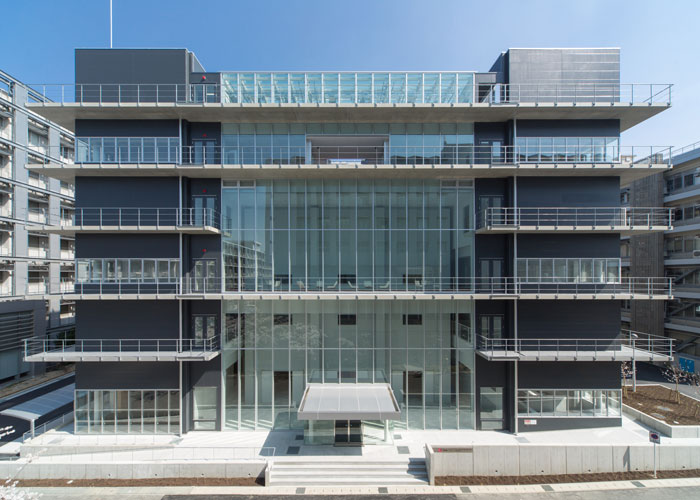
-
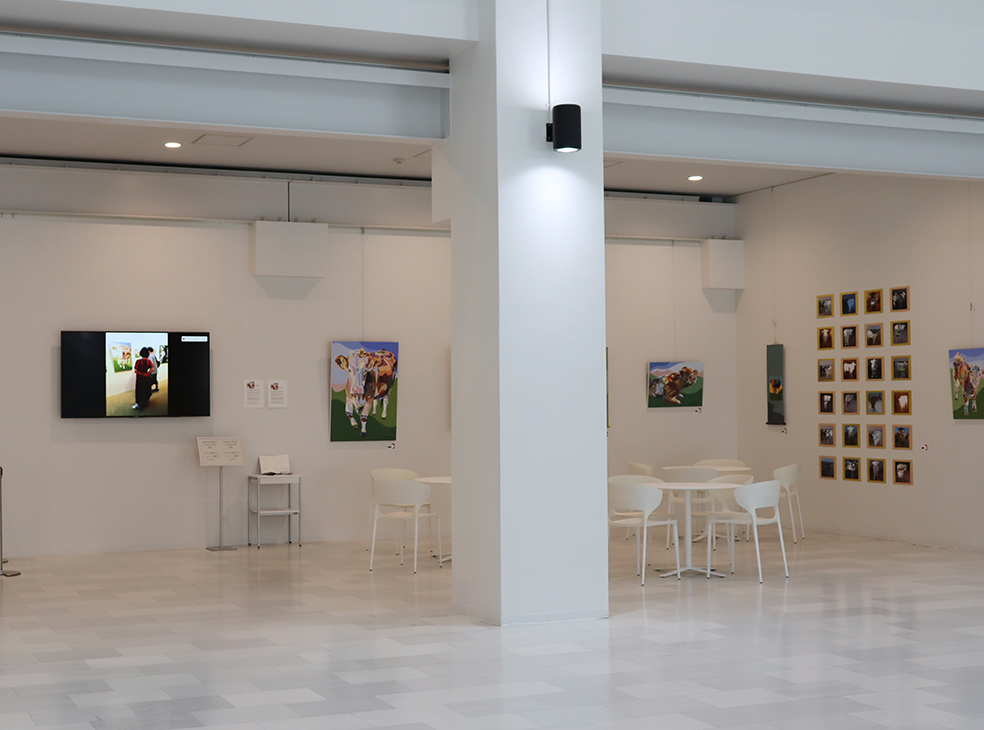 ITbMギャラリー
ITbMギャラリー
新しい学際的分子研究拠点「トランスフォーマティブ生命分子研究所 (ITbM)」。1階エントランスのギャラリー部分のみ公開。
※展示内容、展示時期はHP等で要確認開館時間:9:30~19:30 休館日:日・土曜・祝
The Institute of Transformative Bio-Molecules is a center for the latest interdisciplinary molecular research. The gallery section at the entrance is the only area open to the public. The institute adopted the concept of “integration” between art and science as its primary theme and was built with the intention of not just furthering the understanding of “integration” among a large number of people, but also to inspire scientists and create new and exciting ideas related to “integration.”
*See the ITbM Gallery website for more information on and a schedule of its exhibitions.
Open 9:30-19:30, closed on Sundays, Saturdays and Holidays
8 野依記念物質科学研究館・ケミストリーギャラリー Noyori Materials Science Laboratory
-

開館時間:10:00~16:00 休館日:日・土曜・祝
The Chemistry Gallery includes an exhibit dedicated to Professor Ryoji NOYORI’s research, which won him the 2001 Nobel Prize in Chemistry. Roy Lichtenstein’s Peace through Chemistry is also on display.
Open 10:00-16:00, closed on Sundays, Saturdays and Holidays2001年ノーベル賞展示
2階のケミストリーギャラリーが無料公開されています。2001年にノーベル化学賞を受賞された野依良治特別教授の研究について展示されています。野依博士の研究姿勢、哲学、情熱をどうぞご覧ください。ロイ・リキテンシュタイン「化学/chemistry」も是非ご覧ください。ガラス壁の建物もみどころ
緩やかなカーブを描き連続する2棟の外壁とガラスの壁が特徴です。最先端の化学系研究実験棟のモデルとなっています。休憩スポット
レストラン「花の木」―落ち着いた雰囲気で和食中心
営業時間:11:30~13:45 休業日:日・土曜・祝
お問い合わせ:052-783-8707ダイニングフォレスト―理系エリアの学食
営業時間:平日11:00~20:00/土曜11:30~13:30 休業日:日曜・祝
お問い合わせ:052-782-1832
9 C-TECs AMANO Gallery
-
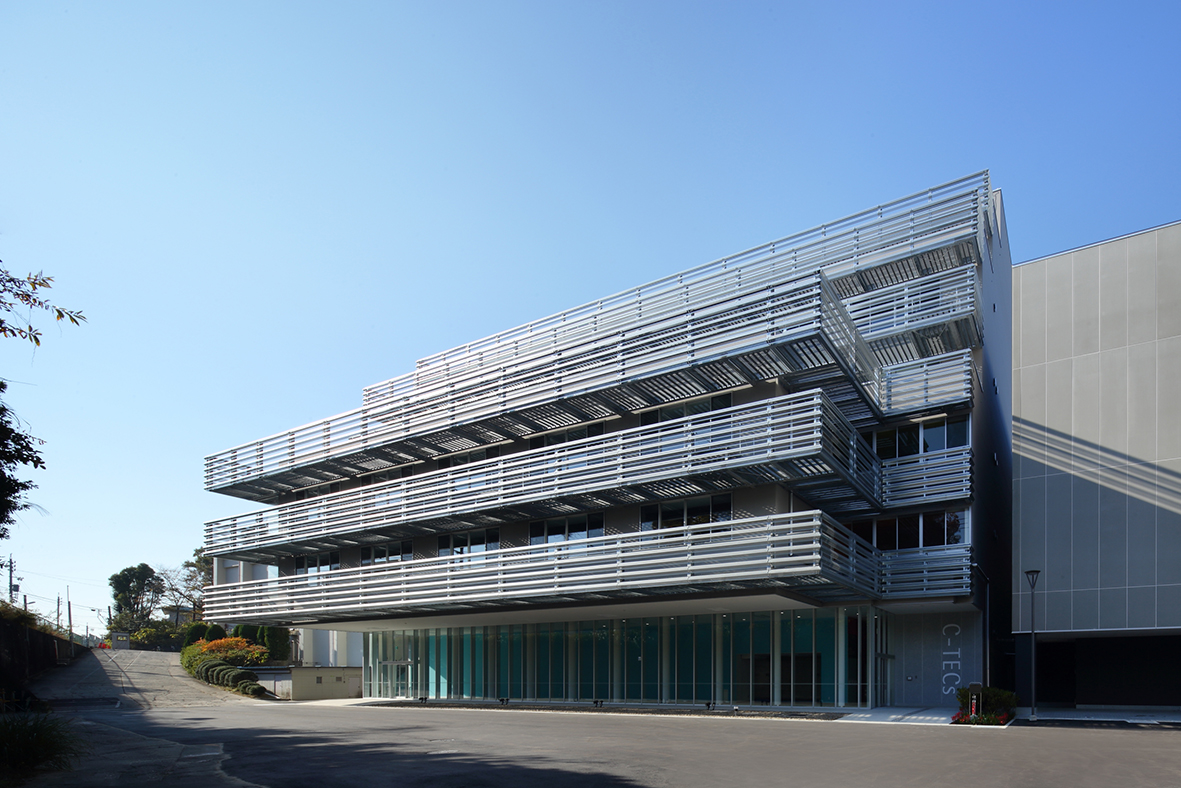
「AMANO Gallery(天野ギャラリー)」は、2014年ノーベル物理学賞を受賞した天野浩教授の功績を顕彰することを目的に、エネルギー変換エレクトロニクス研究館(C-TECs)1階に設置されました。
ノーベル賞授賞式の写真や、受賞後に天野教授へ贈呈された記念品数点を展示しています。C-TECs1階に施されている壁画の横にあり、どなたでもご覧いただけます。
※AMANOギャラリーへは、個別散策でご利用ください開館時間:平日の8:30~17:15
Installed on the 1st floor of the CIRFE Transformative Electronics Commons (C-TECs) to honor the achievements of Professor Hiroshi Amano, who received the 2014 Nobel Prize in Physics.
*Please come for a private walk.
Open 8:30-17:15, closed on Sundays, Saturdays and Holidays